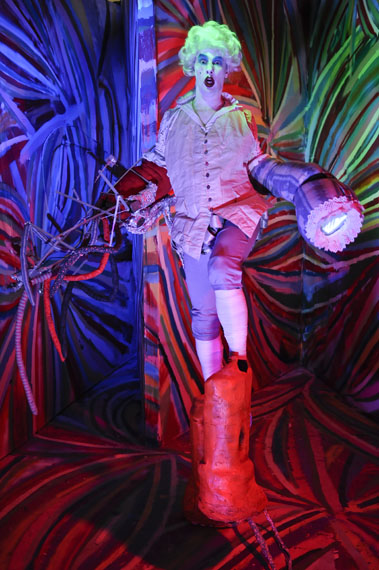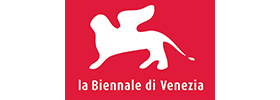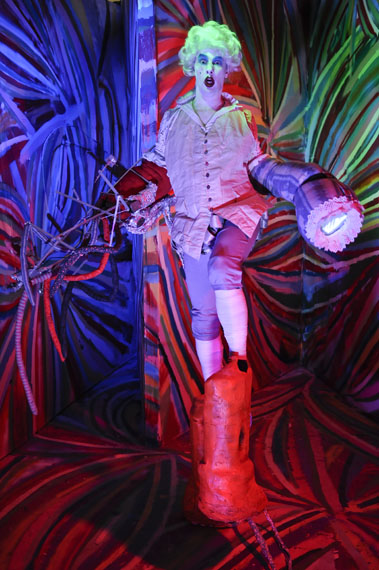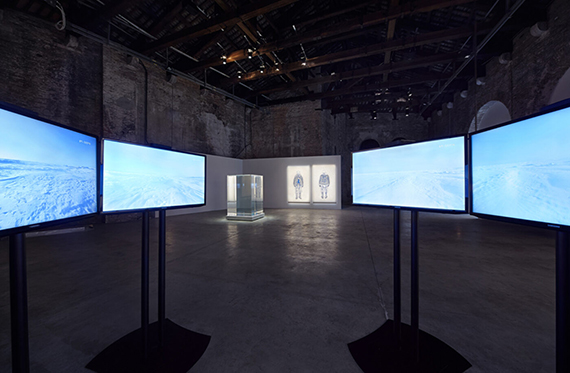
Unzone / Eierloch, 2012
Copyright the artist, courtesy Sadie Coles HQ, London
The Venice Biennale - 55th International Art Exhibition
The Encyclopedic Palace
Kasper Akhøj » Victor Alimpiev » Yuri Ancarani » Uri Aran » Ed Atkins » Nikolay Bakharev » Morton Bartlett » Hans Bellmer » Neil Beloufa » John Bock » Roberto Cuoghi » Enrico David » Tacita Dean » Simon Denny » Trisha Donnelly » Jimmie Durham » Harun Farocki » Fischli & Weiss » Linda Fregni Nagler » Aurélien Froment » Phyllis Galembo » Norbert Ghisoland » Tamar Guimarães » Sharon Hayes » Camille Henrot » Roger Hiorns » João Maria Gusmão & Pedro Paiva » Jos de Gruyter & Harald Thys » Bouchra Khalili » Ragnar Kjartansson » Maria Lassnig » Mark Leckey » James Lee Byars » Herbert List » Sarah Lucas » Helen Marten » Paul McCarthy » Allan McCollum » Steve McQueen » Pierre Molinier » Laurent Montaron » Melvin Moti » Matt Mullican » Bruce Nauman » J. D. 'Okhai Ojeikere » Henrik Olesen » Diego Perrone » Paloma Polo » Eliot Porter » Charles Ray » James Richards » Pamela Rosenkranz » Dieter Roth » Viviane Sassen » Michael Schmidt » Richard Serra » Jim Shaw » Cindy Sherman » Laurie Simmons » Eduard Spelterini » Guillermo Srodek-Hart » Hito Steyerl » Tavares Strachan » Ryan Trecartin » Rosemarie Trockel » Danh Vō » Eugene von Bruenchenhein » Christopher Williams » KAN Xuan » Kohei Yoshiyuki » Artur Zmijewski »
Exhibition: 1 Jun – 24 Nov 2013

The Venice Biennale
Ca' Giustinian San Marco 1364
30124 Venezia
+39 041-2728397

Coupé/Décalé, 2010
Video, 3:54 min.
© Camille Henrot
Courtesy the artist and kamel mennour, Paris
The 55th International Art Exhibition titled Il Palazzo Enciclopedico (The Encyclopedic Palace), curated by Massimiliano Gioni and organized by la Biennale di Venezia chaired by Paolo Baratta, is opening to the public from Saturday 1st June to Sunday 24th November 2013 at the Giardini and at the Arsenale. The preview will be held on 29th, 30th and 31st May. The award ceremony and the inauguration will take place on Saturday 1st June.
88 National Participations will be exhibitingin the historical Pavilions at the Giardini, at the Arsenale and in the city of Venice. Among these 10 countries are participating in the Exhibition for the first time: Angola, Bahamas, Kingdom of Bahrain, Ivory Coast, Republic of Kosovo, Kuwait, Maldives, Paraguay, Tuvalu and the Holy See.
The novelty is the participation of the Holy See with an exhibition held at the Sale d'Armi, an area which is being restored by la Biennale and converted into permanent pavilions. This year the Italian Pavilion at the Arsenale - organized by the Italian Ministry for Cultural Heritage and Activities, with PaBAAC (General Direction for the Landscape, Fine Arts, Architecture and Contemporary Art) - is curated by Bartolomeo Pietromarchi.
The Exhibition Il Palazzo Enciclopedico (The Encyclopedic Palace) will be laid out in the Central Pavilion (Giardini) and in the Arsenale forming a single itinerary, with works spanning over the past century alongside several new commissions, including over 150 artists coming form 37 countries.
“Over the years – the President Paolo Baratta explains– in representing the contemporary, our curators have developed an insight of how important it is to place artists in a historical perspective or in a context of mutual affinities, by highlighting ties and relations both with the past and with other artists of the present. At the same time, in contrast with the avant-garde period, attention has increasingly focused on the intensity of the relationship between the work of art and the viewer who, though shaken by artistic gestures and provocations, ultimately seeks in art the emotion of dialoguing with the work, which should cause that hermeneutical tension, that desire to go beyond what is expected from art.”
“The next Biennale – Baratta adds - is taking a decisive step in this direction, and will give life to a great exhibition-research. With Il Palazzo Enciclopedico (The Encyclopedic Palace), Massimiliano Gioni, much more than presenting us with a list of contemporary artists, wishes to reflect on their creative urges and seems to push the question even further: what is the artists' world? The prospective interest goes so far as to search for relations with different worlds; thus the exhibition will present works by contemporary artists, but also works from the past, different references, works that do not claim to be works of art, but which are part of the stimuli to imagine and dream beyond reality, dream another reality. That is, the visions that in the classical period helped arouse the artists’ "aspirations”, and in modern times are the obsessions of the same; and to give tangible form to both, down to the present time when there is a real reversal. Today, Gioni seems to be saying, it is ordinary reality that lays on a lavishly decked table, a plethora of images and visions for everyday use; they all strike us though we are not able to escape them, and the artist should, if anything, pass through them unharmed, as Moses did in the Red Sea.”
The Exhibition draws inspiration from the model of a utopian dream by Marino Auriti who filed a design with the U.S. Patent office in 1955, depicting his Palazzo Enciclopedico (The Encyclopedic Palace), an imaginary museum that was meant to house all worldly knowledge. Auriti planned the model of a 136-story building to be built in Washington, in that would stand 700 meters tall and take up over 16 blocks.
“Auriti’s plan was never carried out, of course – Massimiliano Gioni says - but the dream of universal, all-embracing knowledge crops up throughout the history of art and humanity, as one that eccentrics like Auriti share with many other artists, writers, scientists, and self-proclaimed prophets who have tried—often in vain—to fashion an image of the world that will capture its infinite variety and richness. Today, as we grapple with a constant flood of information, such attempts to structure knowledge into all-inclusive systems seem even more necessary and even more desperate.”
“Blurring the line between professional artists and amateurs, outsiders and insiders, the exhibition takes an anthropological approach to the study of images, focusing in particular on the realms of the imaginary and the functions of the imagination. What room is left for internal images—for dreams, hallucinations and visions—in an era besieged by external ones? And what is the point of creating an image of the world when the world itself has become increasingly like an image?”�

Eigenlicht, 2012
35mm film
Courtesy the artist and Meyer Riegger
“Il Palazzo Enciclopedico (The Encyclopedic Palace) is a show about obsessions and about the transformative power of the imagination; the exhibition opens in the Central Pavilion with a presentation of Carl Gustav Jung’s Red Book” – Gioni continues. “In the vast halls of the Arsenale the exhibition is organized as a progression from natural to artificial forms, following the typical layout of sixteenth- and seventeenth-century cabinets of curiosities. Just like Auriti’s Palace, these baroque proto-museums brought together man-made and natural wonders to construct visual compendia of the world through a science of elective affinities and magical sympathies. This associative process of knowledge, through its heterogeneous ordering of objects and images, draws interesting parallels between the wunderkammer and today’s culture of hyper-connectivity.”
Through the many examples of artworks and figurative expressions on view, including films, photographs, videos, bestiaries, labyrinths, performances and installations, “The Encyclopedic Palace emerges as an elaborate but fragile construction, a mental architecture that is as fantastical as it is delirious. After all – says Gioni – the biennale model itself is based on the impossible desire to concentrate the infinite worlds of contemporary art in a single place: a task that now seems as dizzyingly absurd as Auriti’s dream.”
“In that sense - Baratta reflects - the curator develops his reflection on the fate of contemporary art and artists, who do not settle for limited horizons when they imagine, but conceive global realities, driven by aspirations for a comprehensive knowledge and sensibility. And I cannot help recalling Harald Szeemann's ‘obsessions’ and the concept of failure that followed. Fertile failures for art, as Gioni says, it is a question for the artist of a powerful and all-encompassing motive.Within la Biennale, the idea of an exhibition-study is considered profitable not only for the Art section but also for the Architecture. For this reason, the Exhibitions of Gioni and Koolhaas (Biennale Architettura 2014) represent important moments in the history of our Institution.”�

Da Vinci, 2012
Digital video, 25 min.
Courtesy the artist and Galleria Zero

Aja Nloso Family, 1980
Date of signature: 05.05.2010
Gelatin silver print, 50 x 60 cm
Courtesy André Magnin (MAGNIN-A), Paris
© J. D. ’Okhai Ojeikere

Chipping Sparrow, Great Spruce Head Island, Maine
Dye transfer print from Birds in Flight portfolio, 1979
© 1990, Amon Carter Museum, Fort Worth, Texas, Bequest of Eliot Porter
Courtesy of Daniel Greenberg and Scheinbaum & Russek Ltd., Santa Fe, New Mexico

Unzone / Eierloch, 2012
Copyright the artist, courtesy Sadie Coles HQ, London

Cowboy, Tumus Masquerade Group, Winneba, Ghana, 2009
Ilfochrome
76 x 76 cm
Courtesy the artist and Steven Kasher Gallery, New York

Bliss, 2011
Performance, 12 hours
Abrons Art Center, Performa 2011, New York
Performers Ragnar Kjartansson, 9 singers and a 14-piece orchestra.
Conductor: Davíd Thór Jónsson
Courtesy of the artist, i8 Gallery, Reykjavik and Luhring Augustine, New York
Photo: Elísabet Davíðsdóttir

Installation view, “Deep Sea Vaudeo,” Galerie Buchholz, Cologne, 2009
Courtesy Galerie Buchholz, Berlin/Cologne

Blindly, 2010
Video, 18:41 min.
Courtesy the Artist, Foksal Gallery Foundation, Warsaw and Galerie Peter Kilchmann, Zurich

Words on Streets 2013
Video still
© Bouchra Khalili
Courtesy Galerie Polaris, Paris

2013 Venice Biennale - 55th International Art Exhibition
main exhibition, The Encyclopedic Palace (Giardini, Central Pavilion).
© Nikolai Bakharev
